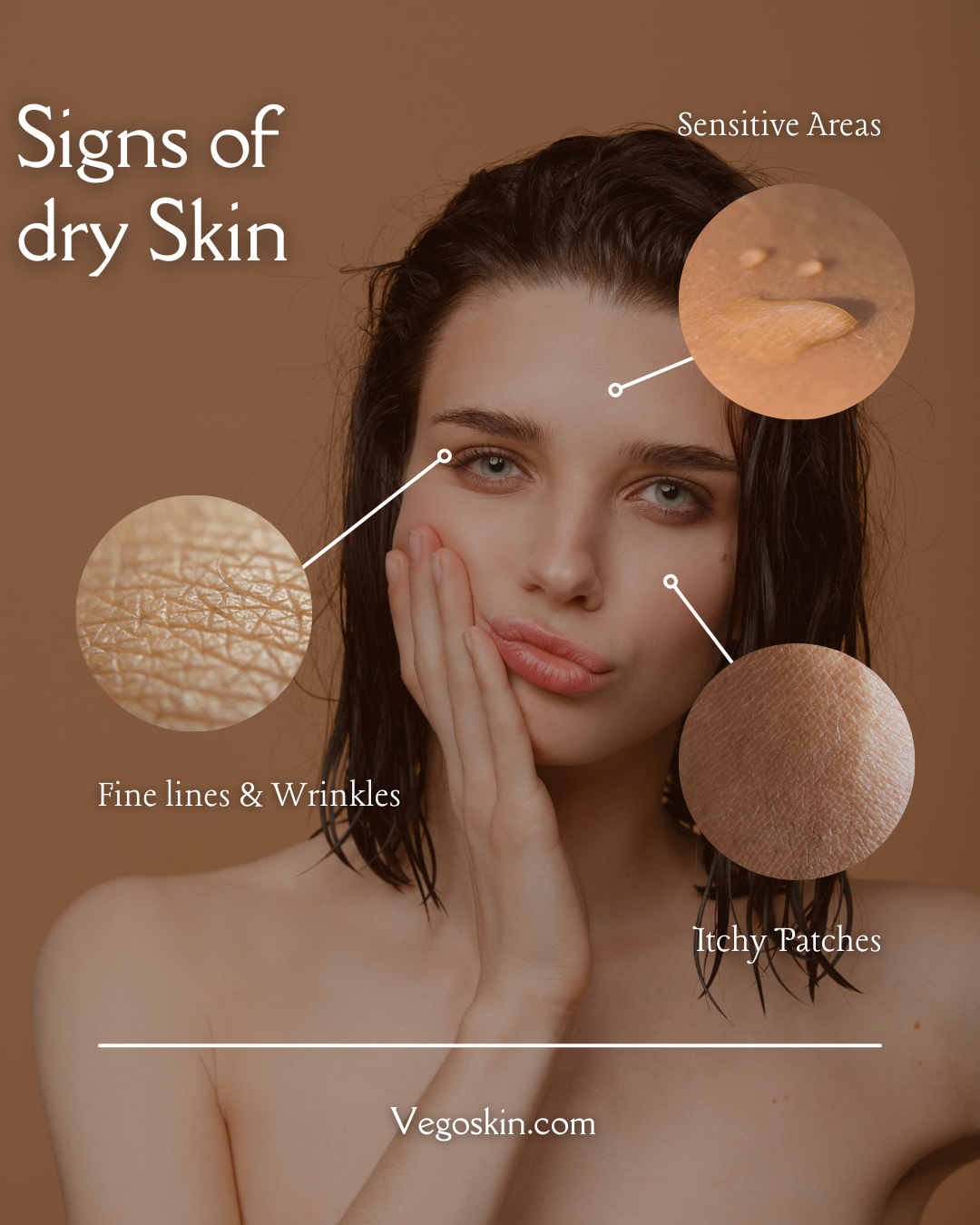The Science Behind Skin Types: What Makes Yours Unique
Your skin is as unique as your fingerprint, a complex canvas that tells the story of your genetics, environment, and lifestyle. Understanding the science behind skin types—what makes yours unique—can unlock the key to better skincare, healthier habits, and a radiant complexion. Whether your skin feels like a desert, an oil slick, or something in between, this article dives deep into the fascinating biology, environmental factors, and practical tips that define your skin type. Let’s explore the science behind skin types, what makes yours unique, and how you can care for it effectively.
What Are Skin Types?
At its core, your skin type is determined by how your skin behaves—specifically, how much oil (sebum) it produces, how it retains moisture, and how it reacts to external factors. Each type has distinct characteristics, and understanding yours is the first step to tailoring a skincare routine that works.
- Normal Skin: Balanced, not too oily or dry, with minimal blemishes and a smooth texture.
- Oily Skin: Excess sebum production, leading to a shiny appearance and potential for acne.
- Dry Skin: Insufficient oil or moisture, often feeling tight, flaky, or rough.
- Combination Skin: A mix of oily (usually the T-zone) and dry or normal areas.
- Sensitive Skin: Prone to irritation, redness, or reactions to products and environmental triggers.
But what causes these differences? The science behind skin types lies in a blend of genetics, hormones, and external influences. Let’s break it down.
The Biology of Your Skin
Your skin is the body’s largest organ, a three-layered marvel consisting of the epidermis, dermis, and subcutaneous layer. The epidermis, the outermost layer, acts as a barrier, while the dermis houses collagen, elastin, and sebaceous glands that produce sebum. The subcutaneous layer provides insulation and cushioning. The science behind skin types hinges on how these layers interact, particularly the activity of sebaceous glands and the skin’s ability to retain moisture.
The Role of Sebaceous Glands
Sebaceous glands are tiny oil factories embedded in the dermis. They secrete sebum, a waxy substance that lubricates and protects the skin. The size and activity of these glands are largely genetic, which is why some people have naturally oily skin while others struggle with dryness. For example:
- Oily skin types have overactive sebaceous glands, producing excess sebum that can clog pores and lead to acne. Studies show that genetics plays a significant role in sebum production, with certain gene variants linked to oilier skin.
- Dry skin types often have underactive glands or impaired barrier function, leading to moisture loss. The stratum corneum (the epidermis’s top layer) in dry skin may lack lipids, which trap water and keep skin hydrated.
Hydration and the Skin Barrier
The skin’s barrier function is another key player in the science behind skin types. The stratum corneum acts like a brick-and-mortar wall, with skin cells as bricks and lipids as mortar. In normal or combination skin, this barrier is well-balanced, retaining moisture effectively. In dry or sensitive skin, the barrier may be compromised, allowing water to escape and irritants to sneak in. According to the American Academy of Dermatology, a weakened barrier can exacerbate dryness and sensitivity, making moisturizers with ceramides or hyaluronic acid essential.
Genetics: The Blueprint of Your Skin
Your DNA is the architect of your skin type. Genes influence everything from sebum production to melanin levels (which affect pigmentation and sun sensitivity) to collagen structure. For instance, people with certain genetic markers may have a predisposition to acne or eczema, conditions often linked to oily or sensitive skin. A 2018 study published in Nature Communications found that genetic variations in the MC1R gene can influence the skin’s response to UV radiation, impacting whether you burn or tan.
But genetics isn’t the whole story. The science behind skin types also involves external factors that can modify how your skin behaves over time.
Environmental and Lifestyle Factors
While your genes lay the foundation, your environment and habits can reshape your skin’s behavior. Climate, diet, stress, and skincare habits all play a role in the science behind skin types, what makes yours unique, and how it changes over time.
Climate and Humidity
Where you live can dramatically affect your skin. Humid climates tend to keep skin hydrated but can exacerbate oiliness, while arid environments can strip moisture, leaving even normal skin feeling dry. For example, someone with combination skin in a tropical climate might notice more oil in their T-zone, while the same person in a desert region might struggle with flaky cheeks. The National Institute of Health notes that low humidity can disrupt the skin barrier, increasing transepidermal water loss (TEWL).
Diet and Hydration
What you eat and drink impacts your skin from the inside out. Diets high in processed sugars or dairy can trigger oil production and acne in some people, as outlined in a 2020 study in the Journal of the American Academy of Dermatology. Conversely, foods rich in omega-3 fatty acids (like salmon or walnuts) and antioxidants (like berries) can support the skin barrier and reduce inflammation, benefiting sensitive or dry skin. Drinking enough water is also crucial—dehydration can make any skin type look dull and feel tight.
Stress and Hormones
Ever notice a breakout before a big event? Stress hormones like cortisol can stimulate sebaceous glands, leading to oilier skin and acne. Hormonal fluctuations during puberty, menstruation, pregnancy, or menopause can also shift your skin type temporarily. For example, many women experience oilier skin during pregnancy due to increased progesterone levels, only to find their skin dries out post-menopause. The science behind skin types is dynamic, with hormones acting as a wildcard.
Skincare Habits
Your skincare routine can make or break your skin’s health. Overwashing or using harsh products can strip natural oils, turning normal skin dry or sensitive. Conversely, heavy moisturizers on oily skin can clog pores. The key is to choose products tailored to your skin type—more on that later.
The Science Behind Skin Types: How to Identify Yours
Unsure of your skin type? Here’s a straightforward method to find out at home:
- Cleanse: Use a gentle cleanser to wash your face, then pat it dry.
- Wait: Don’t apply any products for 2–3 hours.
- Observe:
- Shiny all over? Likely oily.
- Tight or flaky? Probably dry.
- Are you shiny in the T-zone but have dry cheeks? That suggests combination skin.
- No shine, no tightness? Normal.
- Redness or irritation? Sensitive (often combined with another type).
For a more precise assessment, consult a dermatologist who can analyze your skin’s sebum levels, hydration, and barrier function using tools like a sebumeter or corneometer. Knowing your skin type is the first step to unlocking the science behind skin types and what makes yours unique.
Tailoring Your Skincare Routine
Once you’ve identified your skin type, you can build a routine that enhances its strengths and addresses its challenges. Here are tailored tips for each type, grounded in the science behind skin types.
Normal Skin
Lucky you—normal skin is low-maintenance but still needs care to stay balanced. Use a gentle cleanser, a lightweight moisturizer, and sunscreen daily. Incorporate a mild exfoliant (like a 2% salicylic acid toner) 1–2 times a week to keep pores clear. Products with antioxidants, like vitamin C, can protect against environmental damage. Check out Paula’s Choice for science-backed options.
Oily Skin
The goal is to control oil without stripping the skin, which can trigger more sebum production. Use a gel-based cleanser with salicylic acid to unclog pores, followed by a lightweight, non-comedogenic moisturizer. Look for products with niacinamide to regulate sebum and reduce shine. Clay masks can absorb excess oil weekly. Avoid heavy oils or occlusive creams. The Ordinary offers affordable, effective options.
Dry Skin
Hydration is your best friend. Use a creamy, fragrance-free cleanser to avoid stripping oils, and layer a rich moisturizer with ingredients like ceramides, hyaluronic acid, or glycerin. Consider a facial oil (like squalane) to lock in moisture. Exfoliate gently with a lactic acid product to remove dead skin without irritating it. CeraVe is a dermatologist’s favorite for dry skin.
Combination Skin
This type requires balance. Use a gentle cleanser, then apply a lightweight moisturizer to dry areas and a mattifying product (like a niacinamide serum) to oily zones. Exfoliate with a chemical exfoliant 1–2 times a week to smooth texture. Sunscreen is non-negotiable—choose a gel-based one for versatility. La Roche-Posay has great combination skin products.
Sensitive Skin
Less is more. Stick to fragrance-free, hypoallergenic products with soothing ingredients like aloe, chamomile, or centella asiatica. Patch-test new products to avoid reactions. A mineral-based sunscreen (with zinc oxide) is less likely to irritate. Avoid harsh exfoliants or retinoids unless prescribed. Avène specializes in sensitive-skin solutions.
The Science Behind Skin Types: Myths and Misconceptions
The world of skincare is rife with myths, and understanding the science behind skin types can help you separate fact from fiction.
- Myth: Oily skin doesn’t need moisturizer.
Truth: Skipping moisturizer can make oily skin produce even more oil to compensate. Use a lightweight, non-comedogenic one. - Myth: Dry skin means you’re dehydrated.
Truth: Dry skin is often due to a lack of oil or a compromised barrier, not just water intake. - Myth: Sensitive skin is always red or irritated.
Truth: Sensitivity can manifest as subtle stinging or tightness, not just visible redness.
Aging and Skin Type Changes
As you age, your skin type may evolve. Hormonal shifts, reduced collagen production, and slower cell turnover can make oily skin drier or normal skin more sensitive. For example, post-menopause, many women notice thinner, drier skin due to declining estrogen levels. The science behind skin types is not static—your routine should adapt to these changes. Incorporate anti-aging ingredients like retinoids or peptides in your 30s and beyond, but always match them to your current skin type.
The Future of Skin Type Science
Advancements in dermatology are shedding new light on the science behind skin types. Personalized skincare, driven by genetic testing and AI, is gaining traction. Companies like SkinGenie offer DNA-based skin analysis to recommend tailored products. Meanwhile, microbiome research is exploring how the skin’s bacterial ecosystem influences oiliness, sensitivity, and aging. The future promises even more precision in understanding what makes your skin unique.
Conclusion
The science behind skin types—what makes yours unique—is a fascinating blend of biology, environment, and personal habits. By understanding your skin’s needs, from sebum production to barrier function, you can craft a routine that enhances its natural beauty. Whether you’re battling oil, soothing sensitivity, or simply maintaining balance, the key is to listen to your skin and adapt as it evolves. Embrace your skin’s uniqueness, and let science guide you to a healthier, happier complexion.
For more resources, explore the American Academy of Dermatology or consult a dermatologist to dive deeper into your skin’s story. Your skin is one-of-a-kind—treat it that way.



